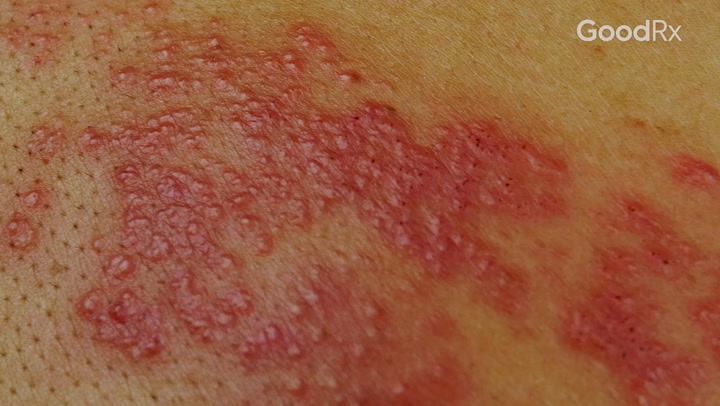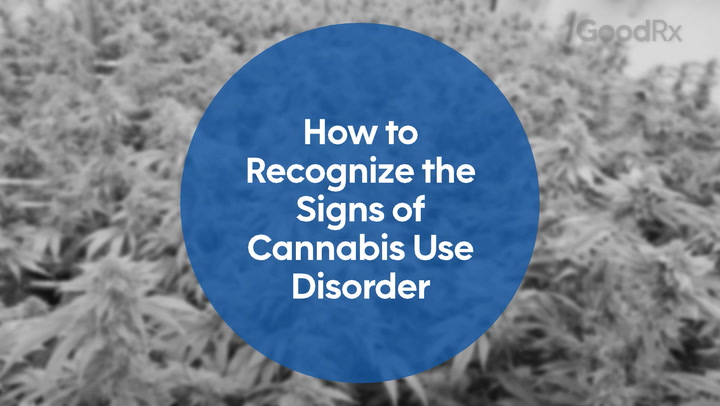
Gabapentin for Anxiety: Dosing, Side Effects, and More
Key takeaways:
Gabapentin (Neurontin) is FDA approved to treat seizure disorder and nerve pain from shingles. But it’s also used off-label to treat many other conditions, including anxiety, nerve pain from diabetes, and hot flashes.
Gabapentin may be effective for anxiety, but it’s usually not a first-choice medication for this use. Other medications have been studied more for anxiety, and they’re typically tried first.
The recommended gabapentin dosage for anxiety and other conditions can range from 300 mg to 3,600 mg per day.
There are several ways to save on gabapentin. For instance, GoodRx can help you access Horizant at an exclusive cash price of about $170. Manufacturer savings cards are also available.
Table of contents

Originally FDA approved as an antiseizure medication, gabapentin (Neurontin) is one of the most commonly prescribed medications in the country. It’s approved to treat seizures and nerve pain from shingles (postherpetic neuralgia). But it’s often used off-label to treat conditions such as insomnia, back pain, and alcohol use disorder.
Before we take a closer look, it’s important to understand that off-label gabapentin use isn’t always safe or effective. Talk to a healthcare professional before considering gabapentin for any of the uses described below.
Gabapentin for anxiety
While gabapentin may be prescribed for anxiety, it’s an off-label use. This means gabapentin isn’t approved for treating anxiety. But research shows it may be effective for some people.
Search and compare options
In one study, women with anxiety, who were previously treated for breast cancer, were given gabapentin 300 mg or 900 mg daily. Compared to placebo (a pill with no medication in it), both doses of gabapentin improved anxiety symptoms after 4 and 8 weeks. A very small study also found that gabapentin was helpful for treating social anxiety disorder.
Overall, there haven’t been any large, well-designed studies that compare gabapentin to first-choice anxiety medications, such as selective serotonin reuptake inhibitors (SSRIs). Without this research, most prescribers don’t recommend gabapentin over other anxiety medications that are more proven to help.
How quickly does gabapentin work for anxiety?
Gabapentin can have a calming effect within a few hours or less. But it may take a few weeks or longer to see a sustained improvement in anxiety.
Gabapentin for anxiety dosage
In studies, gabapentin doses for anxiety range from 300 mg to 3,600 mg daily. This is similar to gabapentin dosages used for other conditions. Higher doses are generally divided into three doses a day.
Some research indicates that doses of at least 900 mg per day are needed to treat anxiety. Still, we don’t have much research overall to indicate the best gabapentin dosage for anxiety.
Can gabapentin be taken at night?
Yes. In fact, when gabapentin is prescribed as a once daily dose, taking the dose in the evening is often recommended. This is because gabapentin can cause tiredness and may even help with sleep.
What are possible gabapentin side effects?
Like all medications, gabapentin can cause side effects, both common and rare. Typically mild, but more common gabapentin side effects include:
Tiredness
Dizziness
Tremors
Nystagmus (rapid eye movements you can’t control)
Fluid buildup
Weight gain
Rare, but potentially serious side effects of gabapentin include:
Depression
Mood changes in children, such as aggressive behavior
Memory problems
Severe skin rash
Suicidal thoughts and behaviors
Severe withdrawal symptoms, such as seizures, if stopped abruptly
Slowed breathing and overdose when combined with opioids, benzodiazepines, or alcohol
Medications for anxiety: Several medications treat anxiety. Learn about your options and how to weigh the pros and cons of different medications.
Gabapentin side effects: Common gabapentin side effects include drowsiness, dizziness, and swelling. Learn about what to expect if you’re taking gabapentin.
Gabapentin FAQs, answered: Knowing how long gabapentin takes to work, and what to expect while taking it, can help you get a better understanding of your treatment.
What cannot be mixed with gabapentin?
Like most medications, gabapentin has drug interactions to be aware of. Most notably, gabapentin can interact with opioids like oxycodone / acetaminophen (Percocet) and benzodiazepines like alprazolam (Xanax). It can also interact with alcohol. Combining gabapentin with one or more of these substances increases your risk of severe drowsiness, slowed breathing, and overdose. Even some over-the-counter (OTC) antihistamines, like diphenhydramine (Benadryl), can cause severe sedation with gabapentin.
Magnesium and aluminum-containing medications, such as Rolaids (calcium carbonate / magnesium hydroxide), Mylanta Maximum Strength (aluminum hydroxide / magnesium hydroxide / simethicone), and magnesium oxide, are OTC medications that may decrease gabapentin levels, making gabapentin less effective.
Share a current medication list with your healthcare team before starting gabapentin, or anytime you start a new medication while taking gabapentin. This will help them check for potential interactions.
Other possible uses for gabapentin
Many gabapentin prescriptions are for off-label uses. Below, we’ll cover a few conditions where gabapentin may help.
1. Diabetic neuropathy
Gabapentin is a first-choice medication for diabetic neuropathy (nerve pain from diabetes). There’s not as much evidence for use of gabapentin for other types of nerve pain, though (besides diabetic neuropathy and postherpetic neuralgia).
2. Pain after surgery
Taking gabapentin before or after surgery may help reduce pain and decrease the need for opioid medications. In several studies, gabapentin was shown to lower pain after procedures like heart surgery, hysterectomy, and thoracic (chest) surgery.
The doses of gabapentin used for surgical pain ranged from 300 mg to 1,200 mg, before and/or after surgery.
3. Alcohol withdrawal and alcohol use disorder.
Alcohol withdrawal happens when you or a loved one has become dependent on regular alcohol consumption and abruptly stops drinking. Withdrawal can be extremely uncomfortable, resulting in symptoms like tremors, mood changes, and sleep problems. More serious side effects are also possible, such as fever, seizures, and hallucinations.
Benzodiazepine medications like chlordiazepoxide (Librium) and lorazepam (Ativan) are first-choice medications to treat or prevent these symptoms. Gabapentin may be a possible alternative (typically at doses of at least 1,800 mg) in people with normal kidney function, but it’s not a first-choice option. Benzodiazepines have shown to prevent serious withdrawal-related consequences like seizures and delirium tremens.
In addition to helping with alcohol withdrawal symptoms, gabapentin may also improve the chances of quitting alcohol use.
4. Cannabis use and withdrawal
Gabapentin may help reduce cannabis use in people who want to stop. Despite misconceptions that cannabis is not addictive, one survey estimates that around 14 million people show symptoms of cannabis use disorder. Similar to alcohol withdrawal, abruptly stopping cannabis can cause some unpleasant withdrawal symptoms, including difficulty sleeping, mood swings, and sweating.
5. Hot flashes in women
Gabapentin may help women who are experiencing hot flashes due to menopause, breast cancer, or medications. Gabapentin dosing for hot flashes is usually 900 mg to 2,400 mg per day, divided into three doses.
6. Restless leg syndrome
An extended-release form of gabapentin known as Horizant (gabapentin enacarbil) is approved to help reduce the symptoms of restless leg syndrome (RLS). This condition is a movement disorder that involves an almost irresistible urge to move the legs, which occurs in up to 10% of the U.S. population.
While immediate-release (IR) gabapentin isn’t FDA approved for RLS, research suggests its effective for this use. In fact, both IR gabapentin and Horizant are considered first-choice medication options for RLS. If IR gabapentin is used, it’s typically used at doses between 1,200 mg to 1,800 mg per day.
7. Itchy skin
Itchy skin is a common, bothersome symptom that may be caused by many medical conditions. Removing the cause of skin irritation and using topical medications or antihistamines can help some types of itchy skin. But gabapentin may be effective for itching caused by certain types of nerve problems. Dosing varies, but up to 3,600 mg per day may be prescribed (divided into three doses).
How to save on gabapentin
There are ways to save on gabapentin, which is available as a generic- and brand-name medication. GoodRx can help you navigate between GoodRx coupons and copay savings cards to save money on your prescription.
Save with GoodRx: A 30-day supply of generic gabapentin may cost as little as $10.80 with a free GoodRx coupon. What’s more, anyone with a valid prescription can use GoodRx to purchase a 30-day supply of Horizant at an exclusive cash price of about $170.
Save with a copay savings card: If you have commercial insurance, you may be eligible to pay as little as $0 for Horizant or $20 for Gralise using a savings card from the manufacturer.
Frequently asked questions
If you’re taking gabapentin, you may wonder if it’s bad for your liver and kidneys. Gabapentin isn’t known to negatively affect these organs. However, you may need a lower gabapentin dose if you have lower than expected kidney function. This is because gabapentin is cleared by the kidneys. It may build up in your blood and increase your risk of side effects if your kidneys aren’t working as expected.
It’s possible. Gabapentin can lead to fluid buildup in the arms and legs (peripheral edema), which can cause weight gain. Additionally, weight gain can occur from gabapentin even without peripheral edema, though this isn’t common.
Taking the correct dose can help minimize your risk of weight gain from gabapentin, so follow your prescriber’s instructions closely.
The bottom line
Gabapentin (Neurontin) is a medication that’s FDA approved to treat nerve pain from shingles and seizures. However, it’s commonly used off-label for other conditions. Examples include anxiety, diabetic neuropathy, and restless leg syndrome.
Some research shows gabapentin works at treating anxiety. But it’s typically not a first-choice medication for this use. Other options, such as selective serotonin reuptake inhibitors (SSRIs), are usually tried first. This is because we have more research on their effectiveness. Talk to your prescriber if you’re interested in gabapentin for anxiety, and they can help you weigh the pros and cons.
Why trust our experts?



References
Ajori, L., et.al. (2012). Effects of gabapentin on postoperative pain, nausea and vomiting after abdominal hysterectomy: a double blind randomized clinical trial. Archives of Gynecology and Obstetrics.
Anton, R. F., et al. (2020). Efficacy of gabapentin for the treatment of alcohol use disorder in patients with alcohol withdrawal symptoms: A randomized clinical trial. JAMA Internal Medicine.
Bates, R. E., et al. (2020). Retrospective analysis of gabapentin for alcohol withdrawal in the hospital setting: The Mayo Clinic experience. Mayo Clinic Proceedings: Innovations, Quality & Outcomes.
Bonnet, U., et al. (2017). The cannabis withdrawal syndrome: Current insights. Substance Abuse and Rehabilitation.
Bockbrader, H. N., et al. (2010). A comparison of the pharmacokinetics and pharmacodynamics of pregabalin and gabapentin. Clinical Pharmacokinetics.
Chang, C. Y., et al. (2014). Gabapentin in acute postoperative pain management. BioMed Research International.
Garcia-Borreguero, D., et al. (2002). Treatment of restless legs syndrome with gabapentin: A double-blind, cross-over study. Neurology.
Hong, J. S. W., et al. (2021). Gabapentin and pregabalin in bipolar disorder, anxiety states, and insomnia: Systematic review, meta-analysis, and rationale. Molecular Psychiatry.
Lavigne, J. E., et al. (2012). A randomized, controlled, double-blinded clinical trial of gabapentin 300mg versus 900mg versus placebo for anxiety symptoms in breast cancer survivors. Breast Cancer Research and Treatment.
Levine, A. R., et al. (2019). High-dose gabapentin for the treatment of severe alcohol withdrawal syndrome: a retrospective cohort analysis. Pharmacotherapy.
Liu, G. J., et al. (2017). Efficacy and tolerability of gabapentin in adults with sleep disturbance in medical illness: A systematic review and meta-analysis. Frontiers in Neurology.
Loprinzi, C. L., et al. (2009). Newer antidepressants and gabapentin for hot flashes: An individual patient pooled analysis. Journal of Clinical Oncology.
Manson, J. E., et al. (2015). Algorithm and mobile app for menopausal symptom management and hormonal/non-hormonal therapy decision making: A clinical decision-support tool from The North American Menopause Society. Menopause.
Markota, M., et al. (2017). Treatment of generalized anxiety disorder with gabapentin. Case Reports in Psychiatry.
Mason, B. J., et al. (2012). A proof-of-concept randomized controlled study of gabapentin: Effects on cannabis use, withdrawal and executive function deficits in cannabis-dependent adults. Neuropsychopharmacology.
Matsuda, K. M., et al. (2016). Gabapentin and pregabalin for the treatment of chronic pruritus. Journal of the American Academy of Dermatology.
Mattson, C. L., et al. (2022). Notes from the gield: Trends in gabapentin detection and involvement in drug overdose deaths — 23 states and the District of Columbia, 2019–2020. Morbidity and Mortality Weekly Report.
National Institute of Neurological Disorders and Stroke. (2024). Restless legs syndrome. National Institutes of Health.
NorthStar Rx. (2024). Gabapentin - gabapentin capsule [package insert].
Sihoe, A. D. L., et al. (2006). The use of gabapentin for post-operative and post-traumatic pain in thoracic surgery patients. European Journal of Cardiothoracic Surgery.
Silber, M. H., et al. (2021). The management of restless legs syndrome: An updated algorithm. Mayo Clinic Proceedings.
Sreekantaswamy, S. A., et al. (2021). Gabapentinoids for pruritus in older adults: A narrative review. Dermatology and Therapy.
Ucak, A., et. al. (2011). The effects of gabapentin on acute and chronic postoperative pain after coronary artery bypass graft surgery. Journal of Cardiothoracic and Vascular Anesthesiology.
Urbano, M. R., et al. (2009). Gabapentin and tiagabine for social anxiety: A randomized, double-blind, crossover study of 8 adults. The Primary Care Companion to the Journal of Clinical Psychiatry.
Wiffen, P. J., et al. (2017). Gabapentin for chronic neuropathic pain in adults. Cochrane.
Yesudian, P. D., et al. (2005). Efficacy of gabapentin in the management of pruritus of unknown origin. Archives of Dermatology.
Was this page helpful?
Related Articles
Browse medications
View AllResearch prescriptions and over-the-counter medications from A to Z, compare drug prices, and start saving.




























